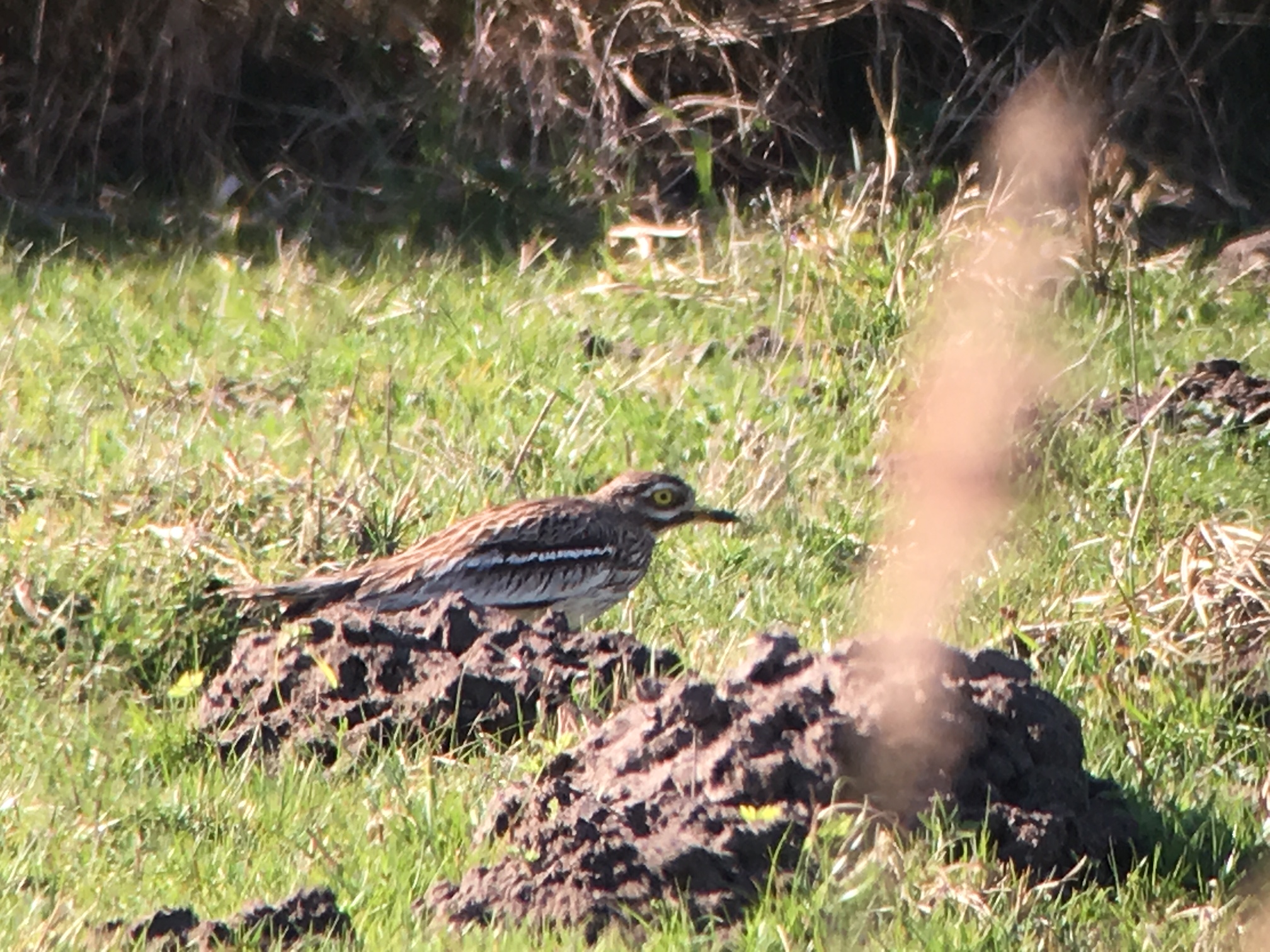Griel
Burhinus oedicnemus · Eurasian Stone-curlew
| Datum | 24 March 2019 |
|---|---|
| Locatie | Lentevreugd, Wassenaar |
| Fotograaf |
|
| Bekeken | 5559 × |
Phonescoop-foto |
Discussie
Gijsbert van der Bent
·
31 March 2019 11:31
Heel fraai Arjan. Ik verbaasde me al over het feit dat van de tig fotografen ter plaatse niemand de moeite had genomen een fotootje op deze site te uploaden. Zodat een discussie over deze geringde vogel onder een (met alle respect) oud stoffig plaatje gevoerd moest worden.
Voor de duidelijkheid: ik zelf had alleen foto's van nieuwsgierige fietsers en voorbijrazend verkeer (we stonden in de berm van een drukke autoweg).
Rubén Barone
·
31 March 2019 22:10
Interesting photo... When dissapeared the Stone Curlew as a breeding bird in Holland?
Wim Wiegant
·
31 March 2019 22:40, gewijzigd 31 March 2019 22:40
Rubén,
I thought is was 1957, of maybe 1959. I tried to look it up in the Dutch Atlas of the Birds (2018) by SOVON, the foundation for bird research in The Netherlands, but to my astonishment, the species does not occur in the book. ...!
For no apparent reason, the species has been forgotten! Just about every other species is in it, such as Bahama Pintail, Mandarin Duck, etcetera, but this species is not. I thought it has been suspected to breed in The Netherlands on a few occasions after 1957, somewhere in de mid-eighties.
Gijsbert van der Bent
·
1 April 2019 11:39, gewijzigd 1 April 2019 11:39
Wim, ik kan 'm ook niet vinden. Raaarrrrrrrrrr. Ik zal de inleidingen nog eens lezen, maar wellicht paste de Griel in de onderzoeksjaren voor deze atlas niet in de vakjes broedvogel dan wel wintergast. Blijft raar, want zoals je zegt staan de duvel en z'n oude moer in dit boek.
Peter de Knijff
·
1 April 2019 12:15
Voor de atlasperiode (2012 - 2015) is winter gedefinieerd tussen 1 december en 28 februari. In die periode is de soort niet waargenomen in Nederland (een quick-check op wrn.nl). Er zijn wel waarnemingen uit de overige maanden maar die zijn niet als broed (verdacht) doorgegeven. Hiermee is het dus een soort welke (blijkbaar) tussen de wal en het schip is gevallen, maar formeel lijkt de afwezigheid in de atlas dus correct. Zie ook de digitale versie van de atlas.
Vincent van der Spek
·
1 April 2019 13:17, gewijzigd 1 April 2019 15:00
@ Ruben: the last pair bred in 1957, in Amsterdamse Waterleidingduinen. This area used to be a stronghold, with e.g. 18-20 pairs in 1923 (an estimated 2/3 of all Dutch pairs at the time).
EDIT: removed unstable link to a picture from 1923
Rubén Barone
·
1 April 2019 14:48
Hi again.
Thanks for the responses about my question. I remember to find, while searching bibliography about the species in the Western Palearctic, a reference to a small monograph on the bird in Holland, published in Dutch by the 50s. I suppose such book is very difficult to obtain at the moment, but it would be very interesting to read the information cointained in it...
Best regards from the Canaries.
Fred Visscher
·
1 April 2019 16:05
Here some Dutch Stone Curlews Rubén. There is also a unique DVD called; Historical film images of Dutch bird paradises with beautiful moving images of Stone Curlews with juveniles in the Kennemer dunes. Probably still available at this store; www.vogelinformatiecentrum.nl
Rubén Barone
·
1 April 2019 16:21
Many thanks, Fred. I didn't know such link, and the images of breeding Stone Curlew in Holland are really interesting, of historic interest. There is an article (in Dutch) about the species in Holland:
STRIJBOS, J. P. (1980). De griel, een duinvogel die werdwijnen moest. Vogeljaar 28: 80-88.
Is there any pdf of this article? It would be interesting for me to obtain it.
The same author published previous papers on the species in the years 1923, 1925 and 1931, dedicated to the Ducth Stone Curlews.
Best regards, and thanks again.
Rubén Barone
·
1 April 2019 23:12
Many thanks. George.
Perfect. Now I'll try to obtain a translation of this text to English...
Best regards from the Canaries.
Gebruikers van het forum gaan akkoord met de forumregels.

